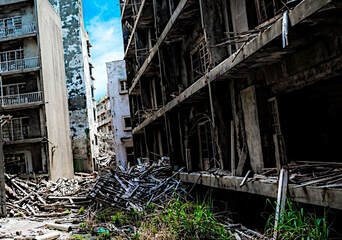
So go downtown”
--Petula Clark
Not anymore. American downtowns, especially those in major cities, may be about to become ghost towns. The pandemic, combined with advances in communications technology like Zoom, have made working from home not only viable, but also preferable for many employers and their employees.
Employers have discovered that working from home means that they don’t have to lease as much space to accommodate a workforce that only rarely, if ever, needs to show up at the office. Employees have found that they don’t have to spend hours every day commuting, saving them not only time and stress, but also money they would otherwise spend on gas, parking, bus, rail or subway fares and suitable office clothing. A recent study by the car-buying website, CoPilot, found that Northeastern Ohioans working from home gained 4.1 hours per day by not commuting during the pandemic. That’s more than 213 hours per year of time freed up for family activities, hobbies, exercise, relaxing, etc. The 2019 Urban Mobility Report from the Texas A&M Transportation Institute found that the average commuter spends nearly seven full working days per year in traffic delays.
A major public benefit of remote work is much less air pollution due to fewer cars on the road. It’s a win-win for almost everyone involved…everyone except commercial real estate owners, public transit entities, restaurants, stores and food trucks that cater to downtown office workers, and cities that see their property and sales tax revenues declining.
A recent study concluded that the daytime population of downtown Washington, DC is down 95 percent during the pandemic. Roughly 90 percent of vertical office space in downtown Seattle is currently leased but empty. Downtown Indianapolis looks like ground zero after a neutron bomb was detonated: lots of buildings, but no people. Similar statements can be made about virtually every major city.
The Building Owners and Managers Association, the trade group representing the commercial real estate community, is approaching panic mode. Surveys of its members reveal the pessimism consuming the industry as it contemplates post-pandemic reality. A recent Coldwell Banker Richard Ellis pulse-taking of senior-level real estate executives discloses a startling level of doom and gloom: Only 41 percent of respondents were confident that the demand for physical office space would decrease only slightly. The remainder were not even that optimistic. Another recent survey of hundreds of CEOs found that almost 70% planned to cut back permanently on their office space. The rosiest prediction was that companies would move to a hybrid work environment where telework would be combined with days physically in the office.
A great deal of commercial space is likely to go empty post-pandemic. Owners and investors, however, will still have to pay the carrying costs—mortgage payments, real estate taxes, property insurance, utilities, etc.—but will see a dramatic reduction in rental income. A bonanza for bankruptcy attorneys will be a disaster for landlords.
Twenty years ago, I consulted with an early proponent of telework. My client found that (1) employee productivity rose by 15 percent, (2) morale skyrocketed, (3) turnover plummeted, and (4) it could function with 20 percent of its former square footage needs. By moving to remote work, it saved an average of $11,000 per employee per year. It never went back to the status quo ante.
Given the likelihood that there is going to be a ton of vacant space, how can it be repurposed, if at all? There are a great many ideas floating around, some of them deriving from the 500 shopping malls (one-third of the U.S. total) that have gone belly-up in the last decade. Other businesses that require large square-footage have moved into mall spaces: fitness centers, churches, public libraries, motor vehicle departments, theaters, museums, art galleries, indoor farms and medical clinics, as well as farmers’ markets in mall parking lots.
However, some of these alternative uses won’t work as well in downtowns where the vacancy square footage is more vertical than horizontal.
Some downtown office buildings may be suitable for redevelopment into housing because they already have the plumbing and electrical capacity that residential buildings require. K-12 and higher education may also be able to use vacant office space. While these are worthy projects, they won’t come close to filling up the tens of millions of vacant square footage that will become available post-pandemic.
Downtowns, where millions of Americans spent the bulk of their waking hours, will be forever changed by the pandemic. The huge cultural upheaval in the way we work will mean that the new, nowhere near as vibrant normal will result in a very different downtown scene.
Dick Hermann
March 5, 2021


 RSS Feed
RSS Feed